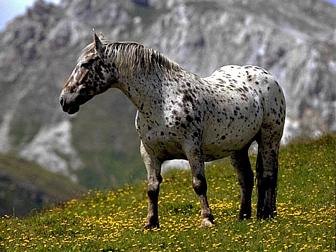
OVERVIEW
South-western France is the home of this large but generally undistinguished horse. The Poitevin was imported into the region to drain the swamps and marshes found there, suited as such by its very large feet. However, the slow and lethargic disposition of this horse does not make it particularly useful as a work animal. In spite of its futility as a working horse, the Poitevin is an excellent breeder of mules.
PHYSICAL DESCRIPTION
This draft horse stands between 16.2 and 17 hands high with a coat that is usually dun, bay or brown. It has a heavy head with long, thick ears. The shoulder is straight, the hindquarter strong and sloping. The legs are massive with heavy feather and very large feet. The horse is known for being powerful, but unusually slow.
ORIGIN
This horse was brought to the marshes of La Vendee and Poitou in the 17th century. Its ancestors are thought to be the heavy horses of the Netherlands, Denmark, and Norway. The horses are bred mainly for the mares which are crossed to produce mules.
INTERESTING FACTS
The mules produced by Poitevin mares are both famous and valuable throughout Europe. The best mares are crossed with the tall jackasses of the region, the Baudet Poitevin strain, to produce a very large mule. Poitevins which are not used for the breeding of mules, however, generally face a more dismal fate, that of the meat market.
INFLUENCES
1. Dutch Draft
2. Norwegian
3. Danish Draft
For more information:
Union Nationale Interprofessionnelle du
Cheval (U.N.I.C.)
22, rue de Penthievre
75008 Paris
FRANCE
French Ministry of Agriculture
National Stud and Equestrian Sports
Department
14 Avenue de la Grande-Armee
75017 Paris
FRANCE